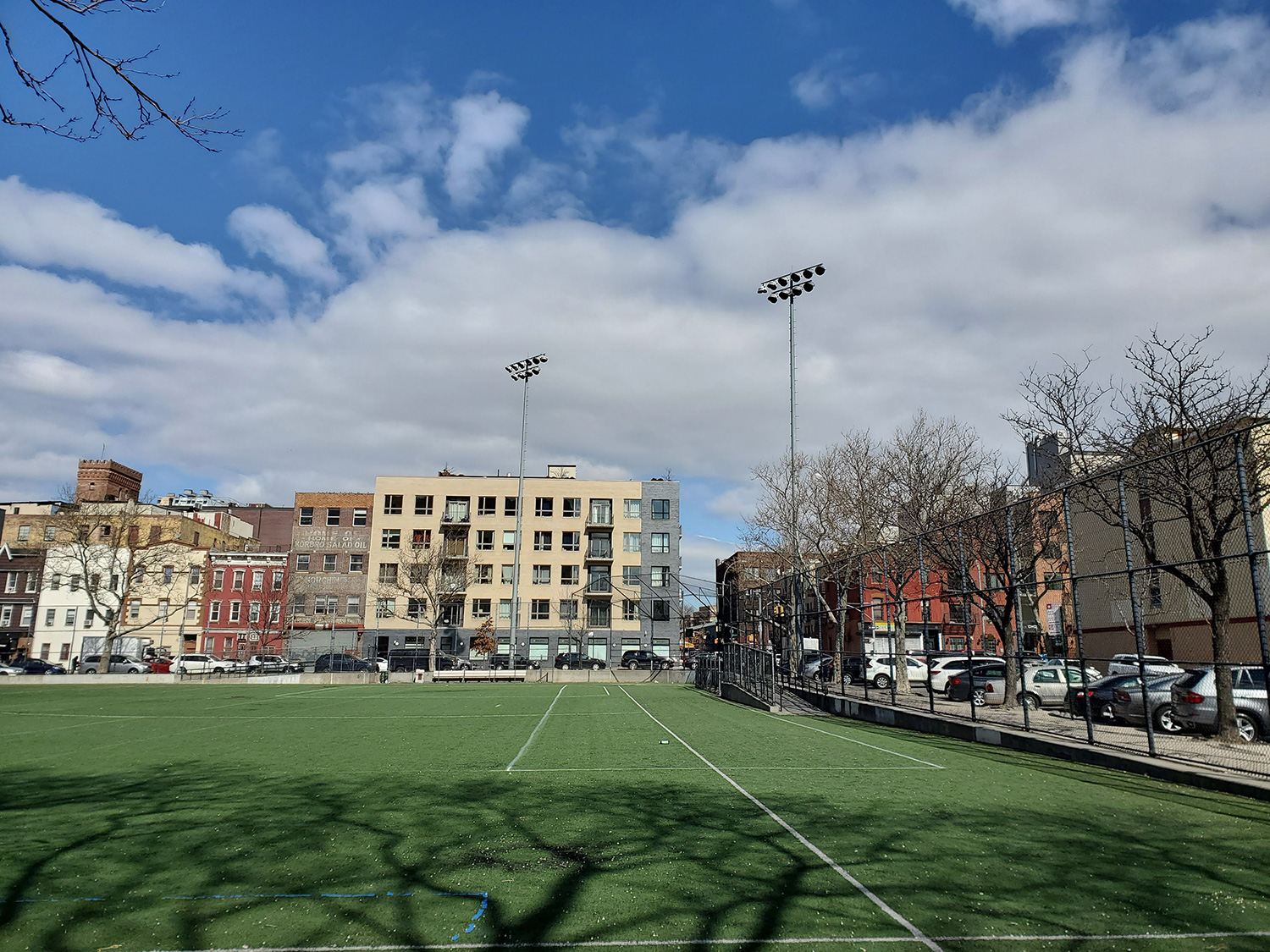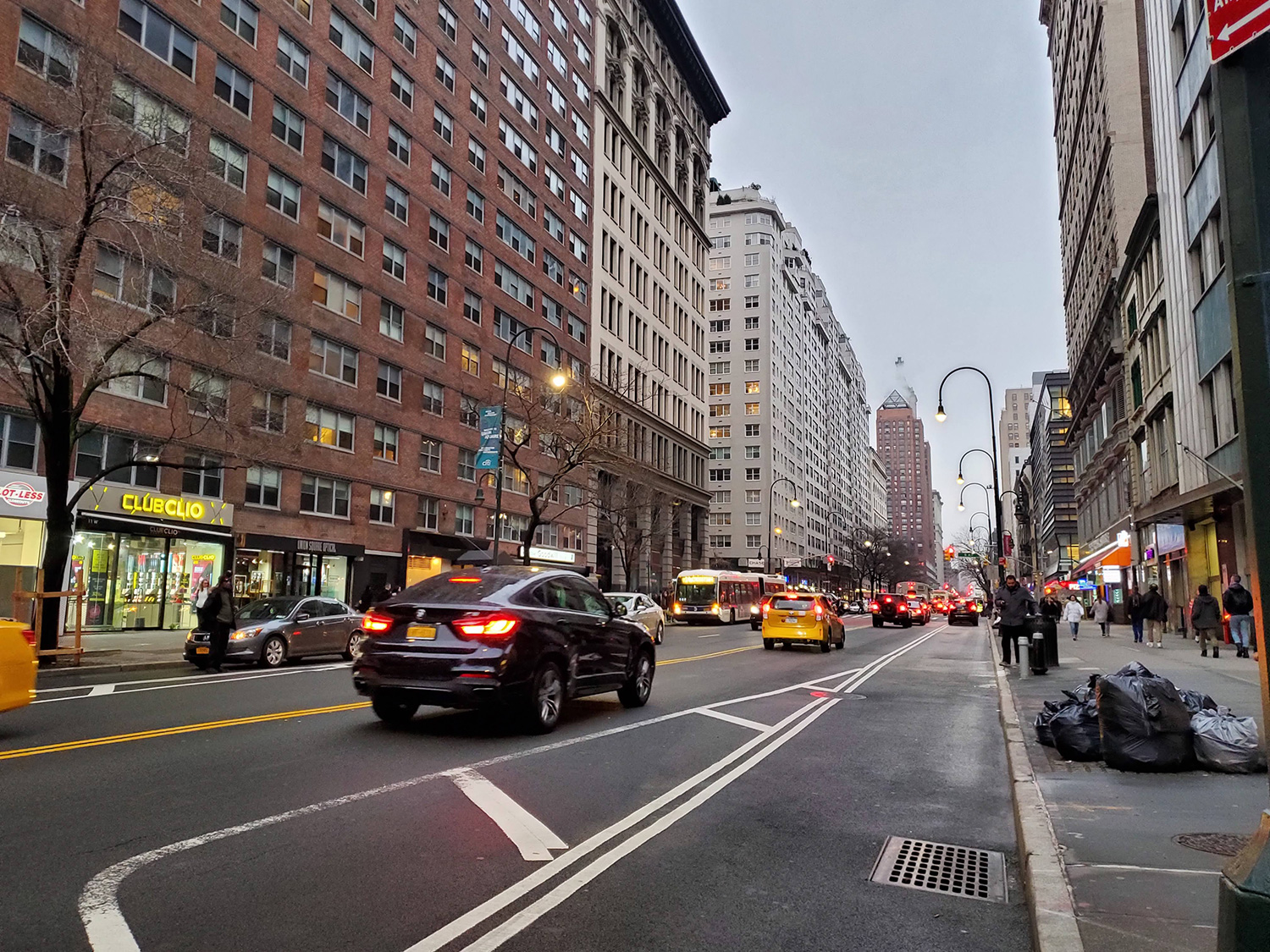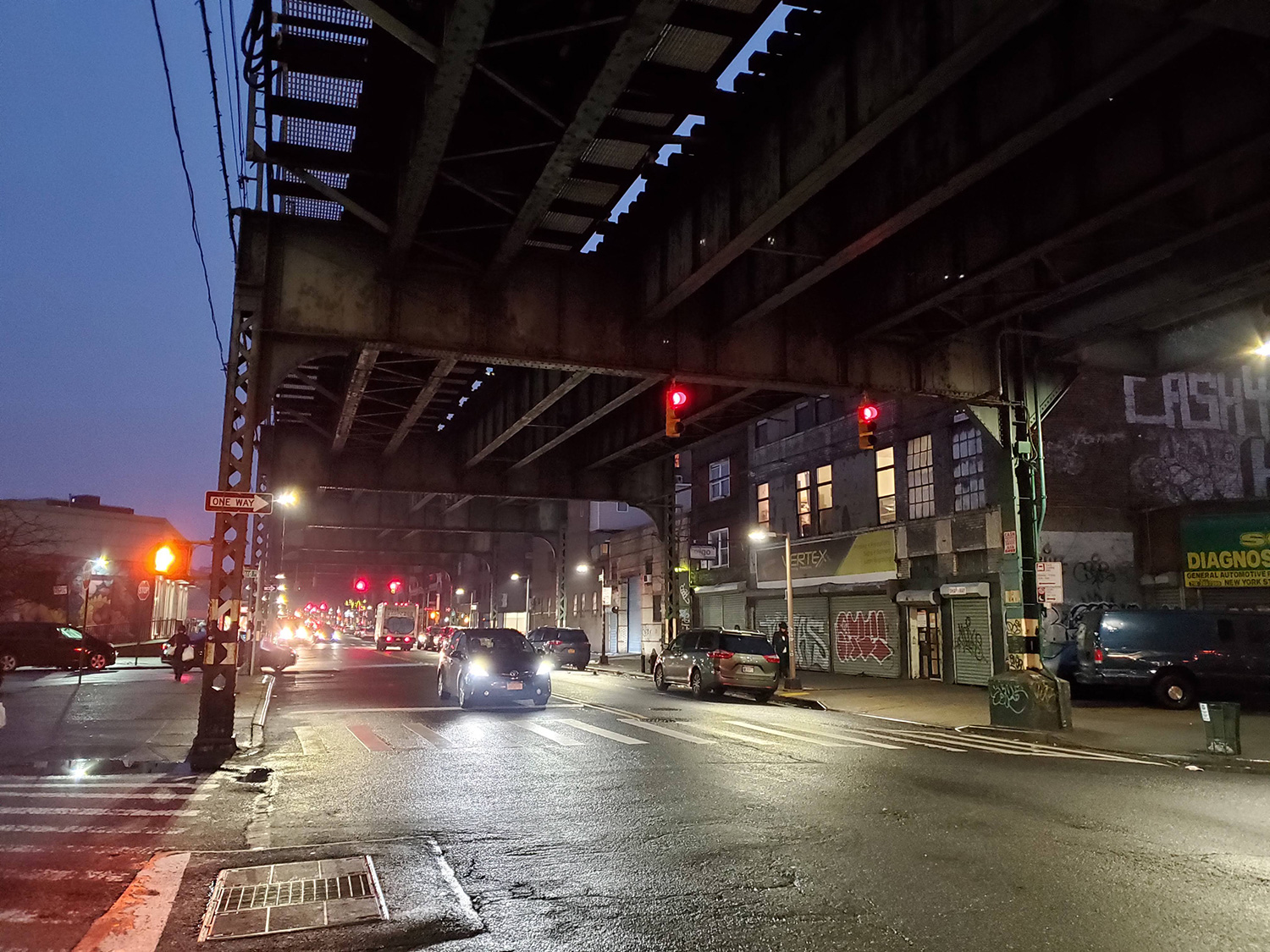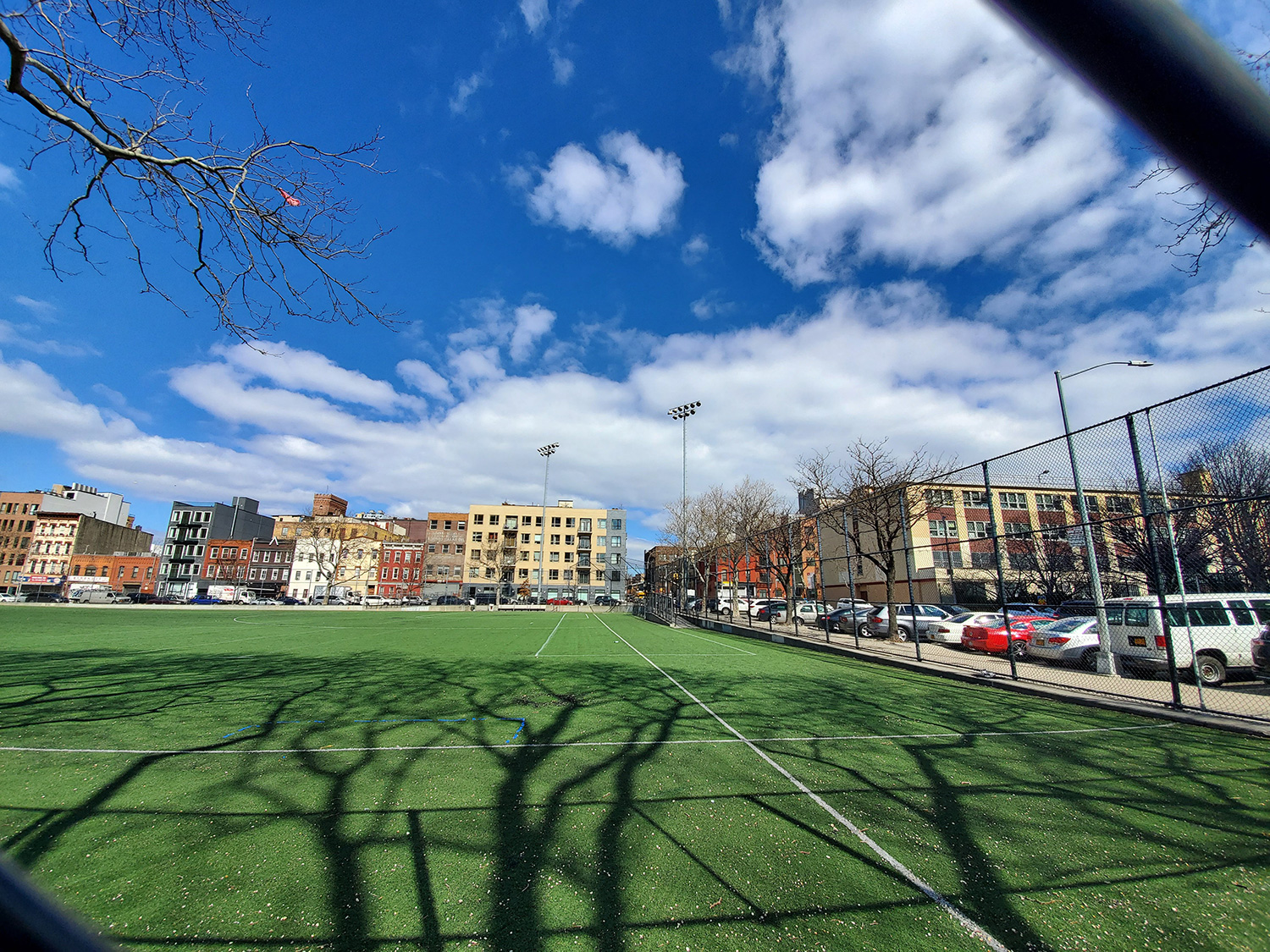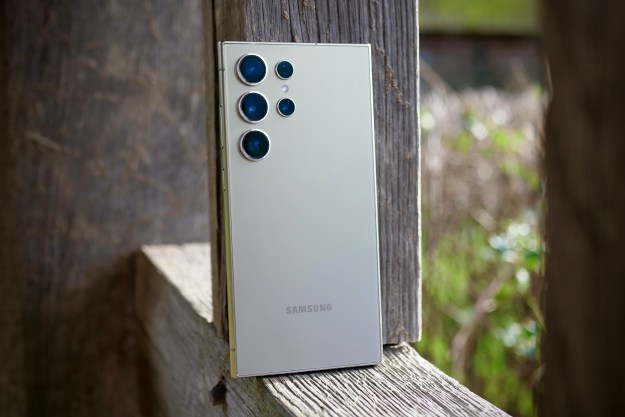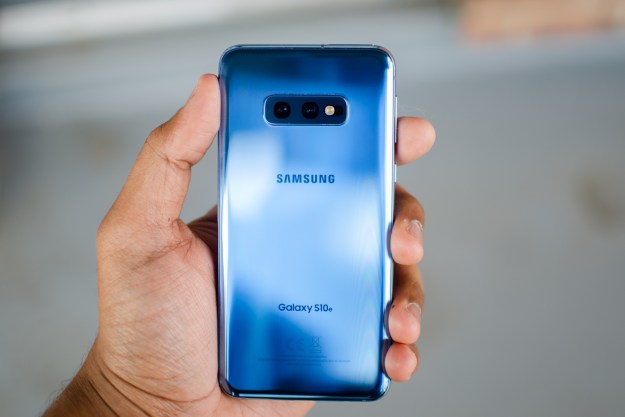
- Perfect 5.8-inch size
- Great display
- Smooth performance
- Fun camera
- Clean, easy-to-use software
- Battery life could be better
- Camera quality can be muddy at night
Want a great price on a smartphone this holiday season? Check out our best Black Friday smartphone deals.
You don’t need to spend $1,000 for a good smartphone. The iPhone 11 already proved that for iOS, and Android has long had strong phones like those from OnePlus that offered plenty of power with a reasonable price. Samsung’s Galaxy S10e is a little more expensive than last year’s Galaxy S9, but it’s the cheapest of the new Galaxy S10 range, bringing the same brilliant display, stellar build quality, capable cameras, and speedy performance to a price that’s easier to stomach than the other Samsung smartphones.
If you’re envious of all the bells and whistles in the Galaxy S10 and S10 Plus but aren’t sure about the high price tag, then consider the S10e, because it offers far more than you’d expect.
An iPhone lookalike
The Galaxy S10e is the perfect size. My palm completely wraps around the 5.8-inch screen, and all the buttons are easy to access — it feels so refreshing in an era of large phones.
Better yet, it’s the only one of Samsung’s new phones that doesn’t have a curved edge screen (so the sides are flat), which means I haven’t run into the issue of accidentally touching parts of the screen with my palm while using the phone — unlike on the S10 Plus. If you’ve criticized Samsung’s phones in the past for the “Edge display,” this is the phone for you.
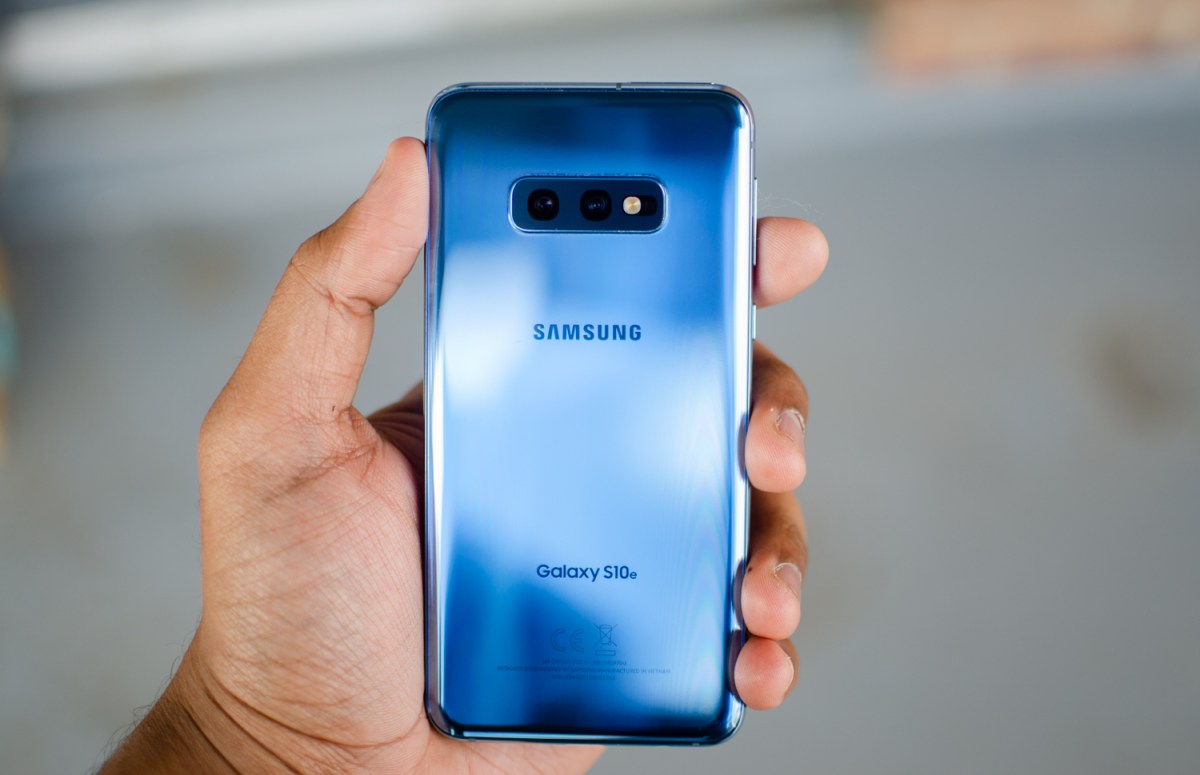
The front of the S10e looks attractive (and very much like the iPhone 11), with uniform and slim bezels surrounding the 5.8-inch screen. There’s a hole-punch camera at the top right, which is the name for the floating selfie camera that looks like a hole punched in a piece of paper. It’s what helps Samsung achieve these slimmer bezels, which in turn allows for more screen real estate. If the hole-punch camera bothers you, there’s a way to hide it, or you can use a creative wallpaper that masks it on your home and lock screen.
It’s the back of the S10e that’s a little disappointing. The rounded corners look nice, but I wish Samsung colored in the camera module black like it did with the S10 and S10 Plus. The phone looks dated, like an old Galaxy S6. The rest of the back is clean, and I love the eye-catching Prism Blue color. You can get the S10e in Flamingo Pink, Prism Black, or Prism White in the U.S. as well.
The Galaxy S10e is the perfect size.
The aluminum frame is thick thanks to the flat edges, offering a good grip when holding the phone — important as both the front and back are completely glass (Gorilla Glass 5 on both sides, specifically). It’s a good idea to nab a case.
On the side of the phone you’ll find the capacitive fingerprint sensor. It’s slightly indented, and it’s a speedy way to unlock the phone. This is another feature that’s different from the S10 and S10 Plus, which have an ultrasonic in-display fingerprint sensor. That’s the newer, cooler tech, but both can be used to access sensitive apps and authenticate payments with Samsung Pay, and I’ve found the S10e’s capacitive sensor more reliable overall.

There’s also face recognition if you want a more convenient way to unlock the S10e, but it’s not as secure, so you can only use it to unlock the phone. If you want to pay, you’ll have to use your fingerprint.
I’m happy to see Samsung include headphone jack for those holding on to their 3.5mm earbuds and headphones. You can even charge the phone via the USB-C port and listen to music at the same time!
Fantastic display
The S10e has a 5.8-inch screen and uses Samsung’s new “Dynamic AMOLED” display technology. You get the same fantastic screen as the Galaxy S10 and S10 Plus. The only difference? It doesn’t have WQHD+ screen resolution. Instead, you’ll have to settle for Full HD+ (2,280 x 1,080). Is this cause for concern? Not at all. The screen still looks sharp, and it’s HDR10+ certified, so you’ll see incredible color accuracy. It’s a beautiful window into the digital world.

It gets incredibly bright, so you won’t have problems looking at the screen in sunlight. Colors on it don’t seem oversaturated, and blacks are impressively deep, which helps mask the hole-punch camera with just a wallpaper.
The Dynamic AMOLED screen does look a little warm, something I only noticed when comparing it to a few other phones, like the iPhone XS Max. I swapped from the Natural color profile to Vivid, and oddly it looked a little more natural.

The screen also natively reduces blue-light exposure by 42 percent, a feature certified by TÜV Rheinland, an independent product testing company. Blue light can be harmful to your health as it can affect sleep, so it’s nice to see this baked in.
The notification bar is bigger now, because of the hole-punch camera, but most apps look good on the thin-bezel screen in portrait orientation. Swap to landscape, and the screen looks a little funky. Third-party apps don’t wrap around the hole-punch camera but use a black bar that ruins the symmetry of the bezels. You end up with a thicker bezel on the side with the selfie camera than the other. It’s not a deal breaker, and it won’t happen often if you don’t put your phone in landscape mode too much, but it’s something you will notice.
It’d be nice if full-screen apps adapt to make use of the screen space.
It’d be nice if full-screen apps adapt to make use of the screen space. YouTube, for example, lets you watch a full-screen video that goes edge-to-edge on the S10 Plus — which looks more immersive — but Netflix has yet to add this support. This also depends on the aspect ratio the video was filmed in, as there are some YouTube videos that look awkward with the hole-punch camera as well.
Speedy performance, One UI software
Just because the Galaxy S10e is less expensive doesn’t mean you’re compromising on performance. It has the Qualcomm Snapdragon 855 processor, the flagship chipset that powers most high-end Android phones this year. Where the S10e differs is it comes with 6GB of RAM in the base model instead of 8GB RAM found in its bigger brothers. You get the same 128GB of internal storage, and a MicroSD card slot is present if you need more space.
Does having less RAM cause a problem? Nope. I haven’t seen a single performance dip in my time using the phone as my daily driver. It runs games like Breakneck and Alto’s Odyssey without a hitch, and multitasking in split screen mode hasn’t caused any issues at all. If you’re worried, you can always spend more money to buy the 8GB RAM option at $850, but at that point you may as well go for the 6.1-inch S10.
- AnTuTu 3DBench: 350,964
- Geekbench 4 CPU: 3,455 single-core; 10,355 multi-core
- 3DMark Sling Shot Extreme: 4,770 (Vulkan)
The benchmark scores all beat out the Galaxy S10 Plus, which makes sense since the S10e is powering a smaller, lower-resolution screen and has less tech inside. In fact, the AnTuTu score now puts the Galaxy S10e as second best in our benchmark rankings, second to the Xiaomi Mi 9, which also uses the same Snapdragon 855 processor.
Complimenting this stellar performance is Samsung’s new One UI interface layered over Android 9 Pie, the latest version of Android. It looks good and is more intuitive as it places crucial interface elements toward the bottom of the screen for easy access — though that doesn’t feel as necessary on the small-screen Galaxy S10e. I am a fan of the darker themes to help protect my eyes when using the phone at night.
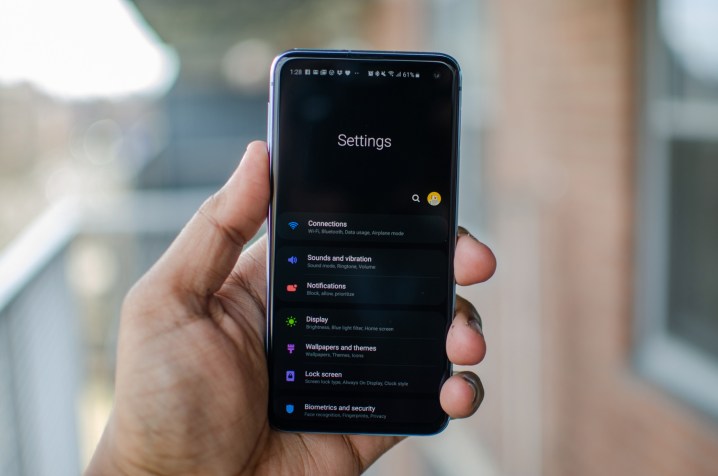
There are some neat touches, like how a light circles the hole-punch camera when you swap to selfie mode, or when the camera is trying to find your face to unlock the phone. The software is deeply customizable — you can completely get rid of the traditional Android navigation bar if you want. The software is a big improvement; barring the Google Pixel 3 and the OnePlus 6T, it’s my favorite interface on a phone.
While it’s nice to see the latest version of Android here, updates are among the biggest issues with Samsung smartphones. The unlocked version of the Galaxy S9 received Android 9 Pie six months after Google released it, which is disappointing. You won’t see this delay on Google’s Pixel phones or the iPhone. Hopefully Samsung will pick up the pace this year when Android Q rolls out.
One thing to keep in mind is the S10e, like the S10 and S10 Plus, can’t connect to 5G networks as it doesn’t have the required Qualcomm X50 modem inside. It’s an opt-in feature, and Samsung has decided to make a special-edition Galaxy S10 5G instead. U.S. carriers are still deploying 5G, so don’t expect to see nationwide service soon.
Bixby
The Bixby Button still exists, sadly. It activates Samsung’s virtual assistant, which I haven’t found much of a reason to use, though it has performed well the times I have asked it to set reminders or asked it queries. I’ve grown used to using Google Assistant — which is also available on the phone — and it often gives me better results.

Thankfully you can remap the Bixby button, though it’s a bit limited. You can set the button to open another app, for example, but a double press will still open Bixby (and vice versa). There’s no official way to set it to open Google Assistant, but XDA Developers have found a method if you’re willing to install a third-party app.
New for the S10e is a feature called Bixby Routines, and it’s genuinely useful, though Bixby’s “artificial intelligence” doesn’t have much to do with it. It works like IFTTT, which lets you set up different profiles for your phone based on certain triggers. For example, I’ve set a routine to put my phone on mute when I arrive at work (Bixby has my work address), and my phone will turn on the sound when I go home. It’s a powerful feature, and there’s plenty to play around with if you want to dive deep into it.
Double the cameras
The Galaxy S10e is smaller than the S10 Plus or S10, which means a smaller screen with fewer pixels. But the biggest difference is arguably the camera. The S10 Plus and S10 reign supreme with three cameras on the back, but only the S10 Plus has two on the front. The S10e only has two cameras on the back, and one on the front.
The main camera is the same on all three phones. It’s a standard 12-megapixel lens with a variable f/1.5 to f/2.4 aperture (which Samsung first debuted last year). While the S10 and S10 Plus have an extra telephoto lens paired with an ultra wide-angle lens, the S10e only gets the latter. It’s a 16-megapixel ultra-wide-angle lens with a f/2.2 aperture. Personally, I’m happy with the wide-angle lens as I can get more unique photos, especially of tight spaces.
Otherwise, expect the same image quality on all three phones. The S10e’s photos offer excellent HDR, never under-or over-exposing a photo. In daylight, photographs are detailed, saturated, and the camera shutter reacts quickly. Contrast is lacking, however, so images can look a little washed.
Low light still seems to pose a problem for Samsung. Images get muddy quickly — especially from the wide-angle lens — though there’s good noise reduction. This phone won’t produce the best photos at night. The Google Pixel 3 with Night Sight is still the champion.
New in the camera software is an expansion to scenes recognized by Scene Optimizer. There are now 30 in total (that’s 10 new scenes, ranging from dog, cat, shoes, and baby). Scene Optimizer uses artificial intelligence to automatically detect scenes like sunsets or people and attempts to adjust your photo to what it thinks looks best. I left it on for most of our testing, and it did help images pop, but can also lead to oversaturation at times.
My favorite feature is Shot Suggestions, which can suggest better compositions. All you need to do is point the camera at the recommended “Best Shot” area and the phone will automatically take the photo. It eliminates the need to tap the shutter button completely. The compositions it suggests are usually solid, though a few poor choices slip in.
Samsung’s Portrait Mode is called Live Focus, which is where a blur effect is added behind a subject. Live Focus photos aren’t quite as good as what we’ve seen from the Google Pixel 3 or the Nokia 9 PureView — details aren’t as strong in low light and the blur effect can look a little messy sometimes. But I do like the new Live Focus mode called Color Point, which keeps the subject in color while making everything else black and white. It does a decent job of maintaining color on a subject, though it does have mess ups sometimes.
What’s more impressive is the camera’s capability to record HDR videos in 4K. Videos have a cinematic look to them and they’re quite colorful. There’s also a “Super Steady” mode for when you’re moving and want to capture stable footage. It’s impressive how well it works, but there are stipulations on how these modes can be used. You can’t shoot 4K HDR at 60 frames per second, for example, just at 30FPS. You can’t use Steady Shot if you’re shooting in HDR, so you’ll need to turn it off, and it only works with the main lens. These settings should automatically change when you tap on different shooting modes to make it easier on the person using the phone.
The S10e’s selfie camera is solo, just like the S10. That means you don’t get the extra depth camera that’s available on the S10 Plus. It’s just a 10-megapixel lens with a f/1.9 aperture, which can also capture 4K UHD video. Selfies look good, and the difference in Live Focus selfies between the S10 Plus and the S10e isn’t massive, but noticeable. There’s a stronger blur effect on the S10 Plus, and colors are a little more natural, with better contrast. AR Emojis look janky on the S10e, and it still gets my skin color wrong.
Battery life: The weak link
The 3,100mAh battery will get you through a day, but barely. You won’t have to fret if you arrive home from work around 6 or 7 p.m. as I frequently had around 25 percent left with medium use. But if I had plans to extend my night out, I’d need to carry my portable battery pack.
In our video playback test, with the phone on Wi-Fi and at max brightness, the Galaxy S10e lasted around 9 hours and 26 minutes, which is a little less than the 10 hours and 12 minutes from the Galaxy S10 Plus. That may sound close — but remember that this tests constant use. Most people use a phone in spurts throughout the day, so that extra 40 minutes might mean several hours of added real-world use.
You won’t rely on Wireless PowerShare completely, but there are moments it can help.
Wired charging is not fast, sadly, as Samsung’s still using the Qualcomm’s Quick Charge 2.0 fast charging standard, when other phones are using Quick Charge 3 or higher, allowing them to charge faster. There is Fast Wireless Charging 2.0 though, and that means wireless charging is as fast as wired charging.
The Galaxy S10e does retain a feature from the S10 and S10 Plus — Wireless PowerShare. Toggle it on in the settings and you can wirelessly charge other Qi-enabled products. It’s handy in specific moments when a friend’s phone is dying, or you want to charge up your Galaxy Buds, or a Qi-enabled smartwatch like the Galaxy Watch Active.
Price, availability, warranty information
The Samsung Galaxy S10e costs $750 and is available for purchase now at carriers and retailers globally. Check out our buying guide for more in-depth pricing details. If you’re hoping to find more discounts, check out the best Samsung Galaxy deals and the best smartphone deals available now.
Samsung offers a limited one-year warranty that covers the phone from manufacturer defects, and not much more.
Our Take
The Samsung Galaxy S10e is what most people looking to upgrade their phone should buy. It doesn’t have the strongest battery life or the best cameras, but it offers good value if you’re looking for a flagship experience without having to shell out $900 or $1,000. You’re still getting the best screen on a smartphone, great build quality, strong performance, good software, and capable cameras.
Is there a better alternative?
The Galaxy S10e’s closest Android competitor is the Google Pixel 4, which costs $800, though you can find it for less now. It doesn’t beat the Galaxy S10e in performance, display, or build quality, but battery life is somewhat similar. The Pixel 3 does win out for having a stronger camera with a better software interface and longer support. If your smartphone experience heavily hinges on having the best camera ever, and you want fast Android updates, you’re better off with the Pixel 3.
Check out the Galaxy S10 and S10 Plus as well. They have bigger and curved screens, an extra camera on the rear (the S10 Plus has an extra front camera too), as well as beefier batteries.
If you’re open to using iOS, then the $700 iPhone 11 should be considered. It has excellent battery life, a good camera, and strong performance. It beats the Samsung in camera performance, but the screen is less impressive.
If $750 is still too much, think on the OnePlus 6T. You get speedy performance, customizable software, and a contemporary design. Camera quality isn’t the best, but the phone only costs $550, so compromises must be made. You could also wait a few months if there’s no rush, as the OnePlus 7 is expected to launch relatively soon.
How long will it last?
The Galaxy S10e is protected by Gorilla Glass 5 on the front and back, but that doesn’t mean you shouldn’t use a case to protect it. The phone is IP68 water resistant, so it can survive underwater up to 1.5 meters for 30 minutes.
I expect it to last three to four years before the battery starts to degrade.
Should you buy it?
Yes. Performance is great, build quality is superb, there’s a fantastic, modern display, and you still get a camera system that’s more versatile than last year’s similarly-priced Galaxy S9.
Editors' Recommendations
- Best Samsung Galaxy Z Fold 4 deals: Grab the foldable phone for $700
- Samsung has a new (and cheaper) way to buy the Galaxy S23
- Samsung Galaxy Ring: news, rumored price, release date, and more
- The 20 best Samsung Galaxy Watch faces you should be using
- A surprise phone just beat the Galaxy S24 Ultra in a big way


